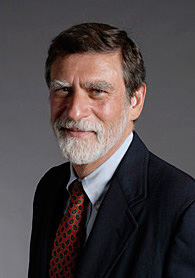When signs indicated that the U.S. economy was in trouble, the usual experts were not necessarily the best prognosticators. That, at least, is Walter Licht’s conclusion. Licht, the Walter H. Annenberg Professor of History, observes that “Economists gave little to no warning about the recession. There really was very little discussion.”
As a historian and labor market expert who has written several books on industrialization and labor in 19th and 20th century America, Licht’s work provides an alternate framework for understanding the present economic woes. “Americans like to think of their economy as ever onward and upward. But we experience amnesia when thinking about the past,” Licht says, noting that in U.S. economic history, periods of crisis are as common as periods of prosperity.
Licht argues that there are two ways to consider recessions. Economists generally believe recessions are part of cyclical ups and downs, booms and busts, resulting in the economic equivalent of a roller coaster. By focusing on the individual circumstances of each recession, Licht finds that each downturn—including the present one—has its own unique causes and its own dynamic course to follow. “It is challenging to pinpoint a definitive inciting factor of today’s recession,” Licht says, “You could look at the immediate past and analyze events of the last decade, such as Wall Street’s stapling together of mortgages, including sub-prime loans.” But a look deeper into history suggests there may be some troubling structural sources.
Prior to the 1950s, enterprises drove their accumulated savings back into creating new productive capacities, but a shift materialized in the ‘50s and ‘60s. The choice not to modernize plants, despite the fact that newer technologies were in the offing, is recognized by historians as a key decision that ultimately devastated the manufacturing sector.
“America was sitting pretty. Circumstances were so great that we could not imagine a crisis that would jeopardize our economic standing,” Licht says. Instead, corporate managers were concerned that modernizing plants would lead to overproduction—and nobody was willing to take that risk.
But eventually, America’s manufacturing sector fell far behind competitors in Japan and Korea, who began flooding American markets with better, cheaper products. The resulting decline in manufacturing jobs through plant closings and the shift of jobs overseas left the U.S. unable to boost its economy. At the same time, the excess capital—capital which hadn’t been invested in expanding productive capacities—provided fertile ground for growth in speculation in real estate and arcane financial instruments.
Licht notes that the “financialization” of America—where Wall Street profits now far outdistance profits for manufacture—created a culture where investors could quickly and easily buy and sell financial products they didn’t truly understand—and often on borrowed money. The result, according to Licht: “a speculative spending frenzy.” With the best and brightest students in the country creating computer algorithms for the buying and selling of equities, the financial revolution mushroomed. But, as Licht points out, for all the science behind it, the performance of the industry is proof that in financial speculation nothing is a sure thing.
The events of the past decade—the gutting of the manufacturing sector, the stagnancy of real wages and financialization—have led to an economic perfect storm. Licht believes that the current recession is likely to be enduring with no self-evident solution. “The problem is that no one knows how to restore middle-tier jobs. Republicans argue for lowering the tax rates of the wealthy and keeping wages in check, and Democrats counter with ill-conceived and financed stimulus packages that add to the deficits. Both parties are keeping Wall Street afloat.”
Licht adds that in the past, wars put people back to work, but today’s wars do not boost employment and the production of armaments today is more capital than labor intensive. A 30-hour work week, for example, could effectively spread available work around to more people and would give individuals more time and energy to contribute to their communities—especially important given the economy’s impact on local budgets.
“We need to dis-incentivize behaviors that lead to financial speculation and environmental degradation and create a currency that rewards civic engagement,” Licht says. “Perhaps this sounds utopian, but with the current gridlock of political ideas the time is ripe for entirely new ways of thinking.”



